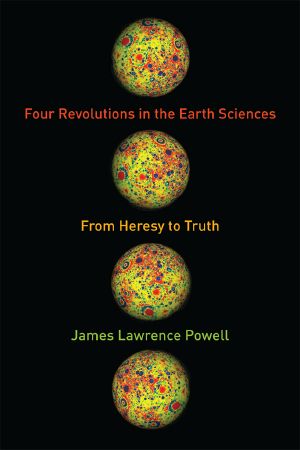Four Revolutions in the Earth Sciences · From Heresy to Truth

- Authors
- Powell, James Lawrence
- Publisher
- Columbia University Press
- Tags
- science , earth sciences , general , sci019000 , sci092000 , global warming & climate change
- ISBN
- 9780231164481
- Date
- 2015
- Size
- 7.65 MB
- Lang
- en
James Lawrence Powell serves as executive director of the National Physical Science Consortium, a partnership among government agencies and laboratories, industry, and higher education dedicated to increasing the number of American citizens with graduate degrees in the physical sciences and related engineering fields, emphasizing recruitment of a diverse applicant pool that includes women and minorities. He received his Ph.D from the Massachusetts Institute of Technology and has taught at Oberlin College and served as its acting president. He has also been president of Franklin and Marshall College, Reed College, the Franklin Institute Science Museum in Philadelphia, and the Los Angeles County Museum of Natural History. Presidents Ronald Reagan and George H. W. Bush both appointed Powell to the National Science Board. He is also the author of The Inquisition of Climate Science.
How does science advance from entrenched orthodoxy to embrace new ideas? How do we come to accept as truths propositions that at first seem like heresies?
Over the course of the twentieth century, scientists came to accept four counterintuitive yet fundamental facts about the Earth: deep time, continental drift, meteorite impact, and global warming. When first suggested, each proposition violated scientific orthodoxy and was quickly denounced as scientific -- and sometimes religious -- heresy. Nevertheless, after decades of rejection, scientists and many in the public grew to acknowledge the truth of each theory.
The stories behind these four discoveries reflect more than the fascinating push and pull of scientific work. They reveal the provocative nature of science, which raises profound and uncomfortable truths as it advances. For example, the Earth and the solar system are older than all of human existence; the interactions among the moving plates and the continents they carry account for nearly all of the Earth's surface features; and nearly every important feature of our solar system results from the chance collision of objects in space. Most surprising of all, we have altered the climate of an entire planet and threaten the future of human civilization. This absorbing scientific history is the only book to describe the evolution of these four ideas from heresy to truth, showing how science works in practice and how it inevitably corrects the mistakes of its practitioners. Scientists can be wrong, but science can be trusted. In the process, astonishing ideas are born and, over time, take root.